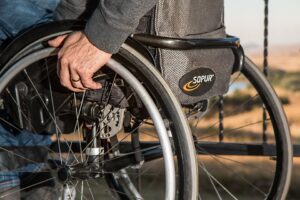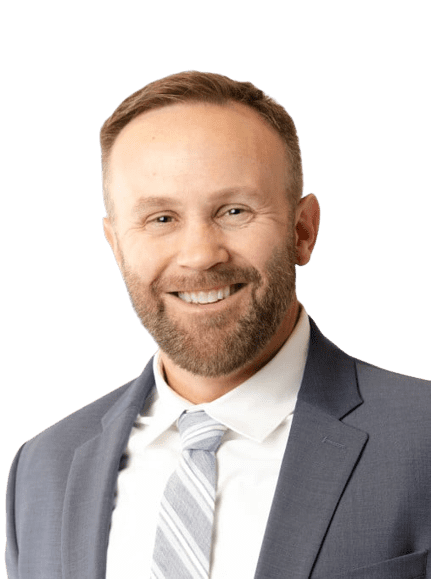Whether you are at your friend’s house or going to the grocery store, you can be injured at any time. You may wonder if you are completely to blame or if another party could have contributed to your injuries.
Whenever you experience an injury after entering someone’s property, such as a slip and fall or some other type of accident resulting in injury, you can potentially hold the owner of the property responsible for your resulting damages under the legal theory of premises liability.
Premise liability involves when a property owner (or owners) has a potential legal responsibility for injuries experienced due to unsafe conditions on the property. A premise liability case can happen in nearly any type of open space or building, including accidents with slip and falls, swimming pools, construction sites, defective machinery, fires, animals, or lack of proper security. Today we are going to examine the basis of a viable personal injury case involving premises liability and how they may apply to your case.
What the Plaintiff Needs to Prove
In the state of Utah, the specific elements involving a premise liability have to be proven by the plaintiff in order to construct a valid claim for their case. In most cases, the injured party, or plaintiff, will have to prove:
- That the party who caused the injury (the defendant) owned, occupied, or leased the property;
- That the defendant was negligent in the use of the property;
- That the plaintiff sustained injuries; and
- That the defendant’s negligence was a significant factor in causing the harm.
We are going to take a closer look at each specific element below.
The Defendant Owned, Occupied, or Leased the Property. The first thing that must be proven is that the defendant owned, occupied, or leased the property where the accident took place. In a solid premises liability claim, it should be evident that the owner, occupier, or lessee had a duty to inspect and maintain the property and to ensure that the property was in a reasonably safe condition fit for its intended use.
The Defendant Was Negligent in the Use of the Property. Next, you have to prove that the defendant acted negligently in the use of his or her property. Negligence is a legal concept used in civil court that places liability on people for unintentional injuries that are caused to other people. You have to show that the defendant did not use the appropriate standard of care that is necessary for a given situation.
In past cases, whether or not the defendant was responsible for harm sustained on his or her property relied on the status of the person entering the property.
How to Provide Evidence of These Elements
 When proving these elements, it has to be shown that the defendant had a duty to warn or inform you about latent dangers which were not known to you and you could not reasonably discover on your own. This duty can also extend to dangers which the defendant should have known about if he or she had exercised reasonable care.
When proving these elements, it has to be shown that the defendant had a duty to warn or inform you about latent dangers which were not known to you and you could not reasonably discover on your own. This duty can also extend to dangers which the defendant should have known about if he or she had exercised reasonable care.
If you were injured, you need to show evidence of your sustained injuries. This can be accomplished through testimony or through the testimony of an expert physician. You can also provide medical bills on top of this expert testimony concerning the extent of your injuries, the pursued medical treatment, and how these injuries have impacted certain aspects of your life.
You then have to show that the defendant’s negligence was a significant factor in your sustained injuries. The injuries suffered have to be reasonably foreseeable regarding the defendant’s action or neglect. Also, the defendant’s negligence does not have to be the sole contributor to your injuries, it just has to have contributed to the harm experienced.
Liability Depending On the Status of the Person on the Property
Historically, the approached used in jurisdictions in Utah in order to determine the defendant’s standard of care relies upon the status of the person who is entering the property. There are three standard basic statuses: invitees, licensees, and trespassers.
- Invitees. An invitee is someone who enters the property for the financial benefit of the defendant or someone who enters the property that is open to the general public. The defendant owes a duty of reasonable care in maintaining the property to the invitees. This duty includes an assumed obligation to make the property reasonably safe for visitors.
- Licensees. A licensee is anyone who has given or implied permission of the defendant to enter their property. For instance, social guests would be considered as licensees. If the social guest is asked to leave the property and then refuses, however, he or she would become a trespasser (more information on that below). The defendant must repair or give warning of concealed dangers he or she knows of which the licensee is unaware.
- Trespassers. A trespasser is anyone who unlawfully enters or remains on property owned by another. The defendant owes no real duty to the trespasser except to refrain from willfully and carelessly injuring the trespasser.
Slip and Fall Accidents in Salt Lake City
The Centers for Disease Control and Prevention (CDC) reports that 17,000 people die each year as the direct result of being involved in a slip and fall accident. 1 in 5 of these accidents results in serious injury to the head or broken bones. Whatever the circumstances of a slip and fall, these accidents can be potentially deadly. If you are harmed in a slip and fall, you may be eligible to take action against the owner of the property for their inaction or failure to maintain a safe environment for those who may enter the property.
The Salt Lake City slip and fall lawyers at Siegfried & Jensen have helped thousands of victims recover lost compensation as the direct result of a slip and fall accident. It is important to hold property owners liable for their neglect and failure to live up to their duty of care. If you or a loved one has been injured in a slip and fall, contact us at (801) 845-9000 to discuss your case today.

Content checked by personal injury attorney Todd Bradford. I worked for a small law firm in Utah County, where I handled various types of cases. My main focus was personal injury and I decided that is what I enjoyed doing the most. I rejoined Siegfried and Jensen in 2012 where my focus is solely on helping personal injury clients. I take pride in helping personal injury clients and enjoy serving them. If you need an attorney for auto accidents or injuries of any kind in Salt Lake City, UT, Ogden, UT, Spokane, WA, or Boise, ID, contact us.

